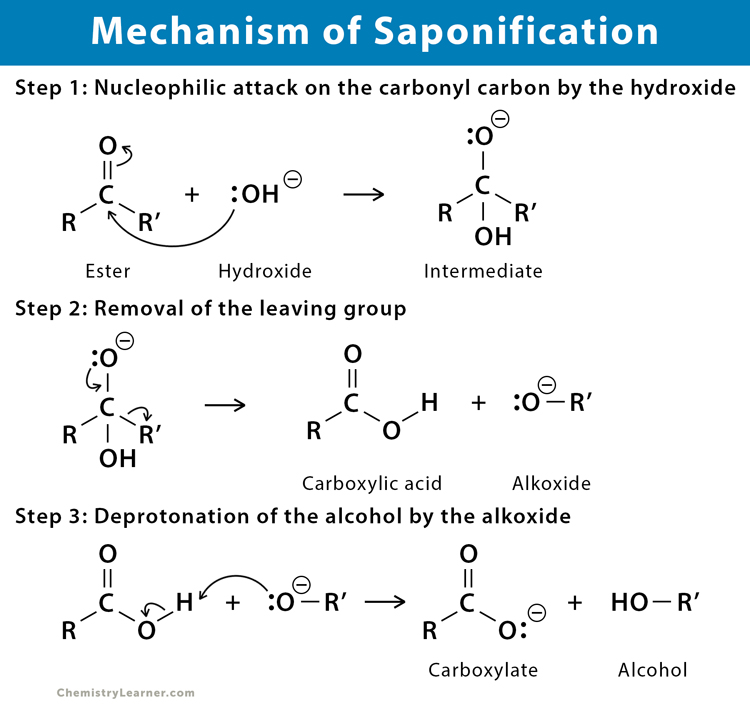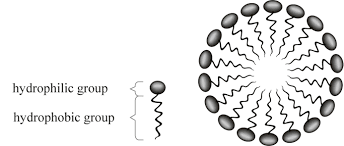Saponification
the reaction of an ester with sodium hydroxide will hydrolyze the ester into a carboxylate salt and an alcohol
- this is a superior method since the formation of a carboxylate makes this reaction irreversible
this is the general reaction:

this reaction is irreversible because carboxylate salts are more stable than carboxylic acids and thus do not react under the same conditions
- this is a special case of LeChatelier’s Principle since one of the products is removed
mechanism of saponification:

“Saponification” itself means “making soap”
- it comes from the reaction of fats with bases to form soap
Fats and oils are triglycerides/triacylglycerols: triesters of glycerol
- when the triglycerides are hydrolyzed, sodium salts of the fatty acids are formed
- these make soap an effective surfactant
- they are amphipathic: having both polar and nonpolar regions
soap acts as a cleaning agent because it forms micelles: spherical structures formed by the self-assembly of amphipathic molecules
- these micelles can trap nonpolar dirt inside the nonpolar portions of the fatty acid salts
